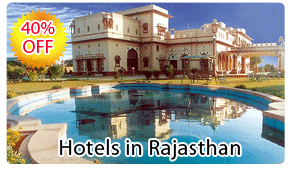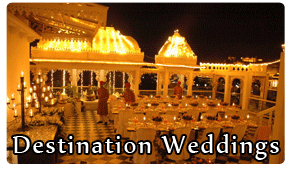
- perfectholidaytravel@hotmail.com
- +91 9811138106 / 9811 5939 89
Samode City

Samode Palace set amidst fairy tale surroundings. Its history goes back more than four and half centuries. Prithviraj Singh ji of Amber, the seventeenth Prince of the house of Kachhawaha Rajputs, had awarded Samode to one of his twelve sons, Gopal Singhji, along with the hereditary title of Rawal Saheb. Nestled picturesquely amidst rugged hills, Samode Palace with its stately grandeur and frescoed walls is one of the most impressive small palaces in whole of Rajasthan.
The palace is full of architectural delights - the paintings on the walls of Sultan Mahal, the dinning room with its stained glass windows, the Durbar Hall with its painted ceilings and intricately carved walls. The chandeliers give the palace its old world charm. The Palace has a front lawn, terrace and boasts of hosting number of incentives every year. Encircled by hills, it is a refreshing treat with spectacular landscapes. The 400-year-old palace has a wealth of frescoes, many of them depicting religious subjects. The ornate interiors are a fine example of the Rajput haveli architecture.
Samode Bagh
Samode Bagh: Built more than 400 years ago by Rawal Sheo Singhji, it is modelled on the geometric style of the Mughal Garden. Members of the Samode family came here to enjoy rare moments of privacy and relax in the airy pavilions, surrounded by rippling water fountains. A special feature of the stay here is the accommodation being provided in the tents. Meeting point at the Bagh is the elegantly furnished Durbar tent. Dune coloured tents, all luxuriously furnished with every comfort, the lawns, fruit trees, grape vines, and the flowering shrubs make the stay here a memorable one. Evenings come alive with local folk music and dances in the magic of a camp fire. One can swim in the private pool or take camel rides to explore the countryside. Other entertainment activities available here include camel safaris, a visit to the village and the Samode Palace which is just 3 kms away.
Samode Palace
The history of Samode Palace goes back to more than four and a half centuries. Prithviraj Singhji of Amber, the seventeenth prince of the house of Kachhawah Rajputs, had awarded Samode to one of his twelve sons - Gopal Singhji alongwith the hereditary title of Rawal Saheb. Set cosily in the scenic rocky hills, Samode Palace with its stately majesty opens a grand journey into the glorious past through its frescoed corridors. The palace is full of architectural delights. The birds, animals and flowers painted on the walls of the Sultan Mahal, the dining room with its stained glass windows and its collection of old family portraits, the Durbar Hall with its painted ceilings and intricately carved walls and beautiful chandeliers, give this palace its ethnic charm. Each room is done up in traditional Rajasthani style and the antique furniture blends well with the surroundings. A traditional welcome with camel carts, buggies, elephants and local musicians is organized on preference. Camel safaris are available.
Excursions
Ramgarh
The huge artificial lake, which fills in the rainy season, makes it a favourite spot for the locals.
Bagru
The village on the Ajmer Road is known for its block prints called as the "bagru" prints.
Sanganer
It is another well-known place for hand block-printed textiles and hand made paper. This place is also famous for its historical ruins and Jain temples.
General Information
Climate : Mean Max. Mean Min.
Summer : 42.0 degree C 22.0 degree C
Winter : 20.0 degree C 10.6 degree C
Rainfall : 55 cms.
Best Season : Sept.- March
Clothing : Summer light tropical Winter light woollen
Languages : English, Hindi, Rajasthani










